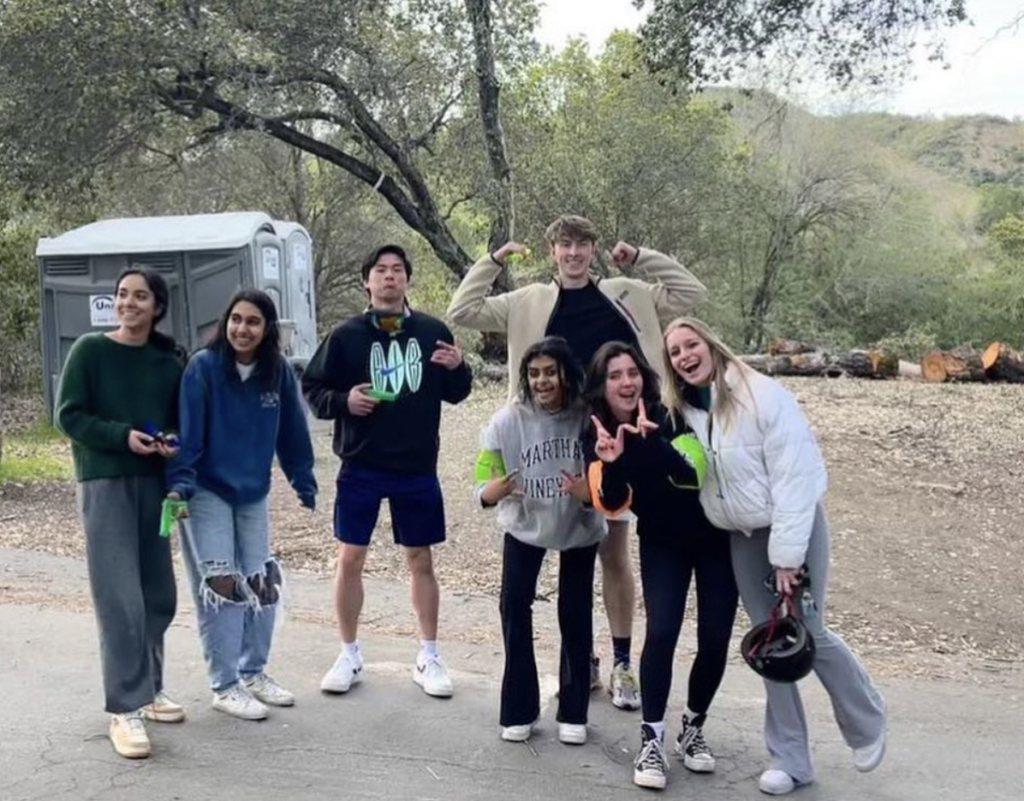In a shaky video, senior Anand Agrawal races into a Jamba Juice, armed with a water gun aimed at senior Jason Cheng, one of the other finalists in Senior Assassin, a four-round annual game where seniors compete in pairs for a cash prize. In the split second of their rapid-fire movements and blurry camerawork, however, both appeared to pull out their water guns and shoot at the same time.
This year 53 teams competed and the incentive of the game was $1,275, which was funded by the $15 entry fee to play per team. Seniors Jacquelyn Ryu and Arnav Garg moderated this year, as they had decided not to participate in the game. The first round began on April 3 and the final round began on May 2.
Each round lasted from Monday morning to the following Saturday evening, and teams were tasked with assassinating both members of another team during that round by shooting them on video with a water gun. Teams could be eliminated by being assassinated or failing to assassinate their target, and those who succeeded moved onto the next round.
This kill would have effectively put Agrawal and his partner senior Erin Sun ahead in the finals, but the kill was invalidated due to the unclear footage.
This final round of Senior Assassin began and ended in controversy. The first competitor to be eliminated was senior Julian Berkowitz-Sklar, who met his fate at the hands of Cheng and senior Ryan Jain. When Sun and Agrawal realized that their kill against Berkowitz-Sklar was invalid as Cheng and Jain had done so first, they attempted to assassinate senior Isha Jagadish but were unable to. Sun and Agrawal were upset by the decision of the moderators to invalidate both kills and protested by allowing Jagadish to shoot both of them, preventing Cheng and Jain from getting the required number of kills to win. In exchange, Sun and Agrawal split the prize money with Jagadish.
The rules laid out “safe zones” where no participants could be killed, located at the school campus, parking lots or other locations where sports or activities were occurring. In addition, players could wear safety items that would protect participants from being killed, such as helmets, swim goggles and pool floats.
Purge days, in which competitors were not protected by safety items, were held throughout all rounds; teams could also eliminate people who weren’t their targets on those days.
However, the rules regarding what kills were valid were a source of conflict for many teams.
“Because our cash prize was so large, people naturally became more competitive, and came up with more ‘gray area’ kills that were ambiguous to the rules,” Ryu said.
Gray area kills included arguments over the correct usage of safety items, the fairness of being let into houses by a competitor’s siblings and questionable deals between teams.
Communication was also an added difficulty because Snapchat was used for team members to share their locations, but competitors often forgot to keep the app open to track their location. This meant that pairs could not always locate and assassinate their targets.
The structure for the final round was a free-for-all, and the person or team with the most kills would be declared the winner. This differed from last year, where winners were chosen based on the total number of kills throughout the whole game, which worked because people utilized purge days to kill people that weren’t their targets.
“We couldn’t do that [this year] because people didn’t really use purge days,” Ryu said. “It made sense for us to do a free-for-all, and the winner would be the person with the most wins.”
In accordance with the deal Jagadish made with Sun and Agrawal, Jagadish ended up with $635, and Sun and Agrawal split the other $635.
“I went into the game with no expectations,” Jagadish said. “But as I advanced to the next rounds I kept my eyes on the prize. I was really surprised when I won.”
























